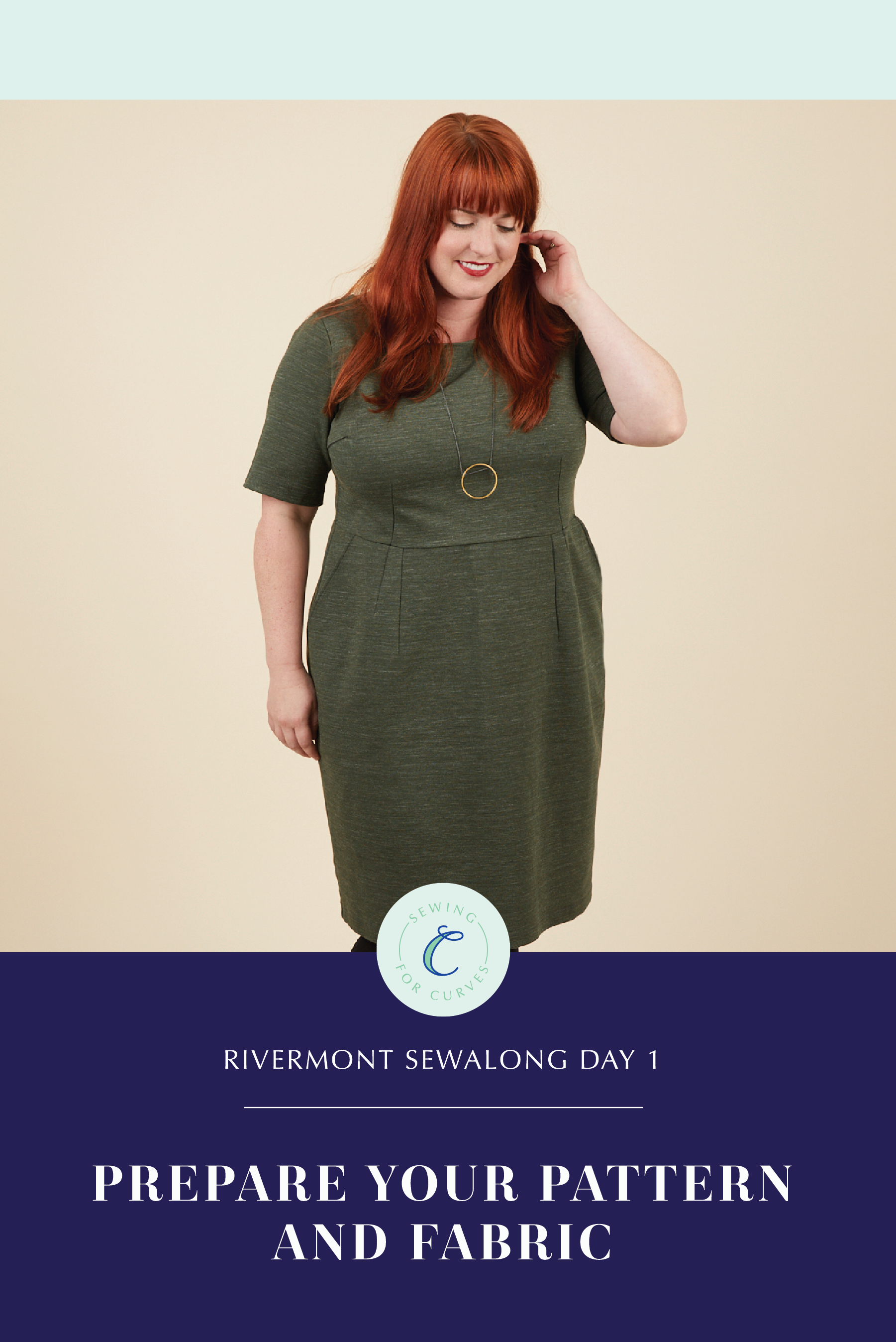
Hi everyone! Carrie here again to get us started on our Rivermont Dress & Top sewalong! The Rivermont is such a perfect fall and winter wardrobe staple and we can’t wait to see what you create!

Choosing your size
The first step in our sewalong is choosing your size in the Rivermont Dress & Top. There are two measurement charts: one is the Body Measurement chart, and the other is the Finished Garment chart. The Body Measurement chart helps you choose your size based on what numbers you get when you measure your body with a tape measure – it has numbers for your bust (around the fullest part), waist and hip. The Finished Garment chart shows you the size of the actual sewn garment – the difference between that and the Body Measurement chart is called “ease”, and it’s the amount of extra room in the garment that the designer recommends for the clothes to fit well and allow movement.
Generally, you want to start by comparing your measurement with the body measurement chart. However, sometimes you might find that it looks like you’ll need to grade between sizes based on your measurements. When this is the case, taking a look at the finished garment measurement chart can help you decide when grading is actually necessary. For the Rivermont, there is negative ease as drafted, which means the garment is slightly smaller than your body and will stretch to fit.
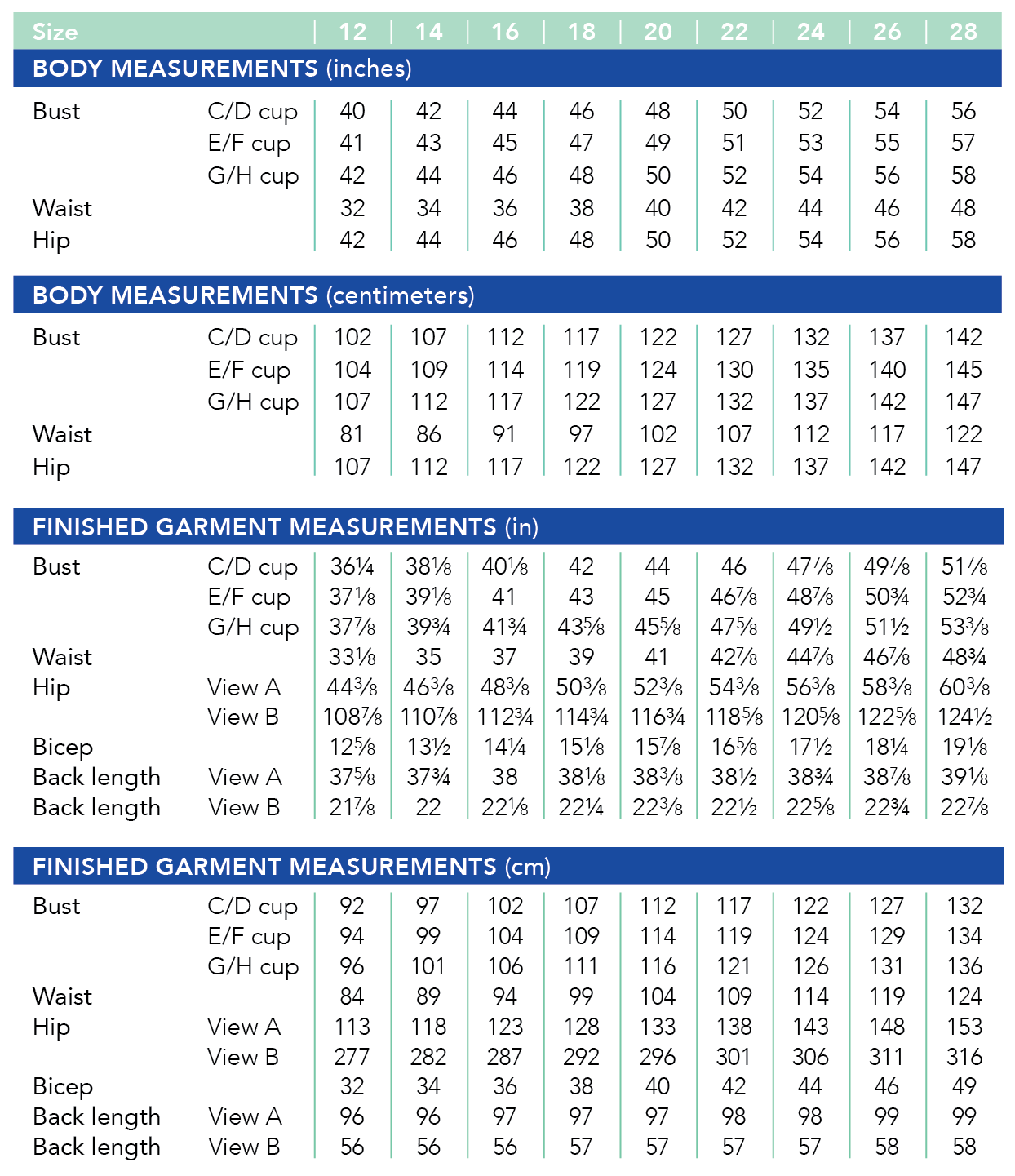
As with all Cashmerette Patterns, the best bet is to start with your bust measurement – you should use your full bust measurement, which is around the fullest part of your bust. Because of the cup sizing, you may find you could fit in two different bust sizes – in which case, you want to pick the overall size that’s closest to your waist size. So for instance, if your bust is 44″, you could theoretically be a 14 G/H or a 16 C/D. Which one should you pick? Take a look at the waist measurement – if yours is closer to 34″ (size 14), then go with the 14 G/H. If yours is closer to 36″ (size 16), then go with the 16 C/D. Also think about the overall size and shape of your frame. Do you have smaller shoulders compared to a larger bust? Then maybe in the above example, even if your waist is 36″ you should try the 14 G/H. Fitting is a bit of art combined with science!
Don’t fret if the cup size doesn’t match up with your bra size – there is so much variation in bra sizing that it’s not possible to perfectly line them up. Use your bust measurement and you’ll be fine.
Grading Between Sizes
Even though it’s drafted for knits, the Rivermont Dress & Top has darts that give it a classic sheath dress fit. Grading between sizes is quite similar to grading on a woven dress as a result. Let’s say your bust measurement is 48″, your waist measurement is 42″, and your hip measurement is 50″. Based on these measurements, you’d want the 18 G/H bust, a size 22 waist, and a size 20 hip.
Start by grading the bodice pieces from an 18 at the bust to a 22 at the waist. Begin at the lower notch on the bust dart on the front and on the side seam notch on the back, adding a curve to the grading.

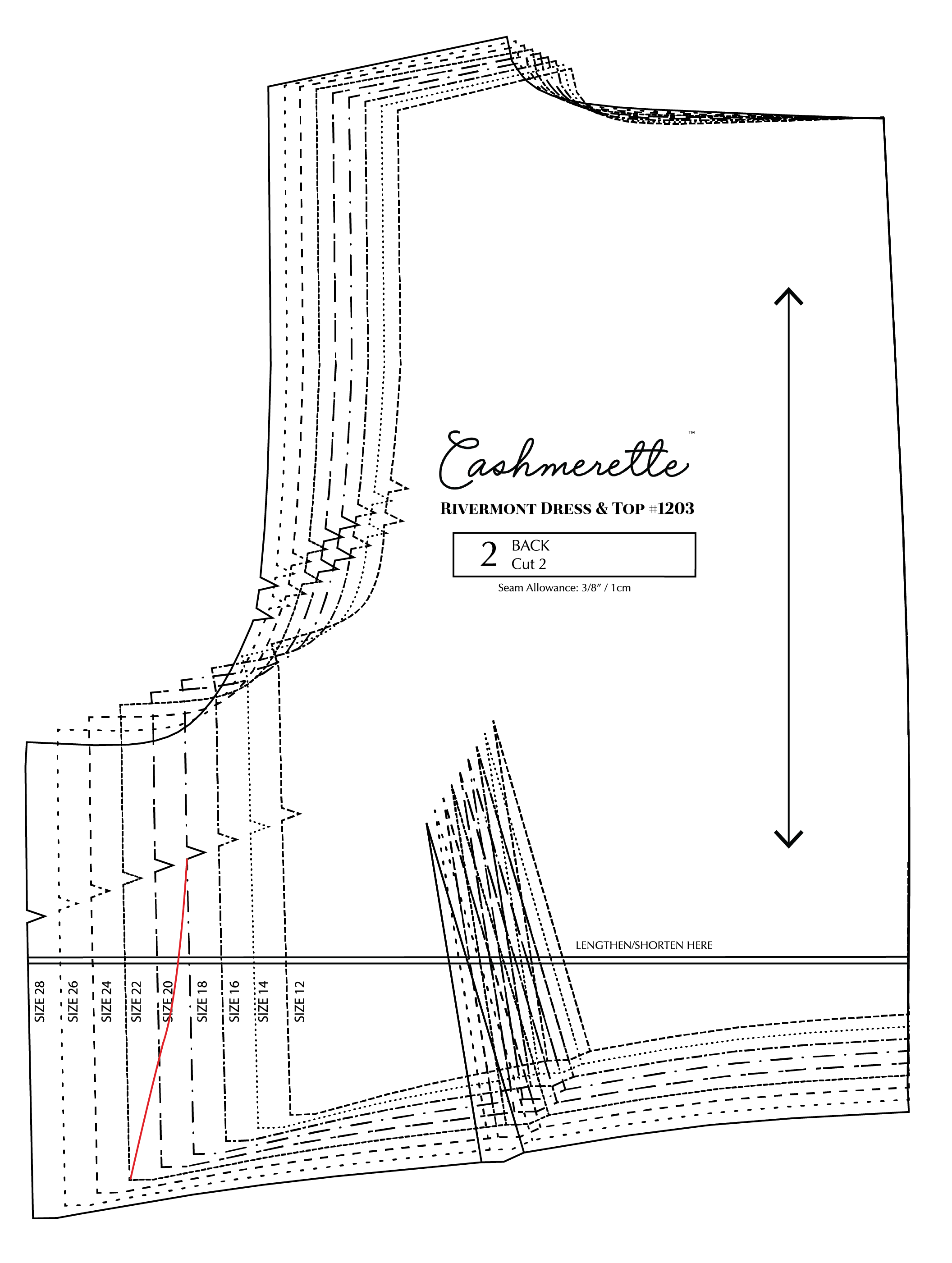
If you’re making the peplum top, go ahead and cut a straight 22 in the peplum! If you’re making the dress, you may want to grade back to a 20 at the hips to get the sheath skirt shape. On the back piece, simply start at a 22 at the waist and grade to a 20 by the hip notch, adding a curve. On the front piece, start grading at the bottom of the pocket opening, since the pocket is the same for all sizes!

Preparing pattern and fabric
Now that we’ve chosen our size and graded if necessary, it’s time to prepare our pattern and fabric so that we’ll be all ready to sew next time!
Here’s your checklist:
- Wash and dry your fabric, to make sure it’s pre-shrunk and you’re not going to get any nasty surprises later! Ponte has a tendency to shrink quite a bit, so you may even want to wash it more than once!
- Press your fabric so it’s nice and flat. Check to see if you get any iron shine when you press the right side. If so, you’ll want to use a press cloth when pressing between steps.
- If you’re using a printed pattern, either cut or trace off your pattern pieces – if you’re making adjustments or are going to make any dresses in other sizes in the future, I definitely recommend tracing.
- If you’re using a PDF pattern, you’ll need to print and assemble it. Here are some pointers to help you.
- Transfer all the markings to the fabric. For the notches, make a little snip into the fabric, within the seam allowance (so no more than 1/4″/6mm).
- Cut all pieces, following the layout diagrams in the pattern.
For the next step in our Rivermont Dress & Top sewalong, we’ll get started interfacing, finishing our facings, and sewing our darts. Share your progress with us using #RivermontDress or #RivermontTop!

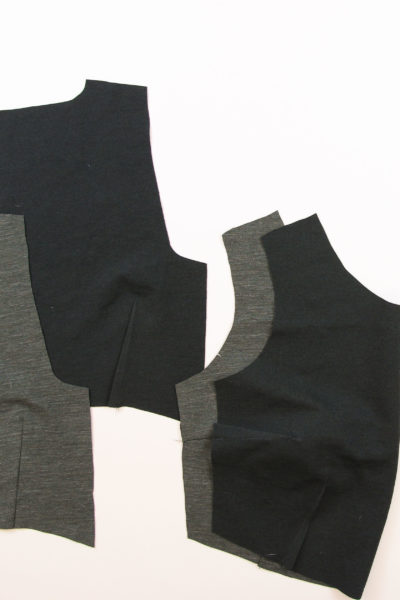
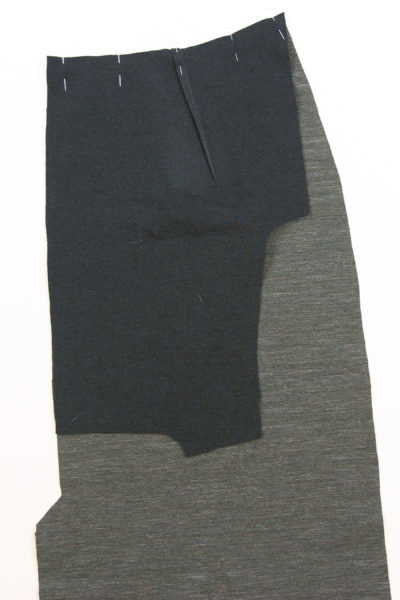


Hi there, I am only 5′ tall. How do I know how much to shorten the bodice/skirt by? Gorgeous dress! Thanks Diane
Hi Jenny,
I took your FBA class and it was wonderful! I started buying your patterns and more workshops but have run into an old problem that I had long forgotten. Even as a scrawny teenager I was very short with a long torso. Now I am over 60 with a lot more curves that have distracted me from the torso issue. From your sizing page, I should make a 22 G/H and grade to 26 for waist and 28 for hips. But when I lay that out the “waist” on the Riverton would be above the bottom of my bust. I see that the bust dart is high on all your examples but on me the bust dart point would be 3″ higher than the apex line. (And the waist darts would be a mess!) I assume I need to lengthen the pattern above the bust but not sure exactly where and by how much because of the negative ease.
Liz